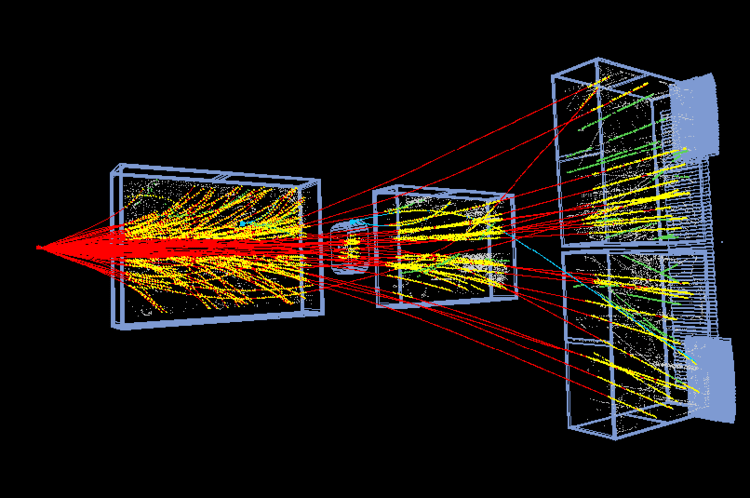 | ||
NA61/SHINE (standing for "SPS Heavy Ion and Neutrino Experiment") is a particle physics experiment at the Super Proton Synchrotron (SPS) at the European Organization for Nuclear Research (CERN). The experiment studies the hadronic final states produced in interactions of various beam particles (pions, protons and beryllium, argon, and xenon nuclei) with a variety of fixed nuclear targets at the SPS energies.
Contents
About 135 physicists from 14 countries and 35 institutions work in NA61/SHINE, led by Marek Gazdzicki. NA61/SHINE is the second largest fixed target experiment at CERN.
Physics program
The NA61/SHINE physics program has been designed to measure hadron production in three different types of collisions:
Detector
The NA61/SHINE experiment uses a large acceptance hadron spectrometer located on the H2 beam line in the North Area of CERN. It consist of components used by the heavy ion NA49 experiment as well as those designed and constructed for NA61/SHINE.
The main tracking devices are four large volume time projection chambers (TPCs), which are capable of detecting up to 70% of all charged particles created in the studied reactions. Two of them are located in the magnetic field of two super-conducting dipole magnets with maximum bending powers of 9 Tesla meters. Two others are positioned downstream of the magnets symmetrically with respect to the beam line. The setup is supplemented by time of flight detector walls, which extend particle identification to low momenta (7000100000000000000♠1 GeV/c < p ). Furthermore, the Projectile Spectator Detector (a calorimeter) is positioned downstream of the time of flight detectors to measure energy of projectile fragments.
